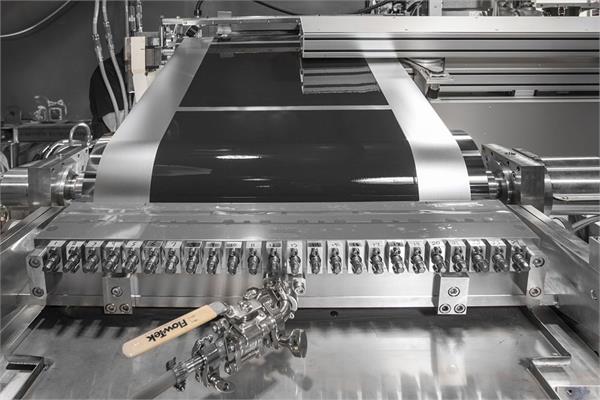
The Dürr Group will provide German battery manufacturer Cellforce Group with a system that can simultaneously coat both electrode sides. Dürr is one of the few suppliers of this technology.
For its new factory in Germany, the Cellforce Group, a joint venture between sports car manufacturer Porsche and battery specialist Customcells, will install a new system for coating electrodes developed by Dürr’s Clean Technology Systems division. From 2022, the system will be initially used as a prototype and in series production from 2024.
“The partnership with Cellforce underlines the attractiveness of our product range. We have highly efficient technology at our disposal and, as a system provider, we can implement complete coating lines. We will make every effort to provide Cellforce with optimum support in the development and production of high-performance cells with high energy density,” says Dr. Jochen Weyrauch, Deputy Chairman of the Board of Management of Dürr AG and responsible for the Group’s automotive and coating business.
The coating process with Dürr’s technology
In electrode coating, anode material is applied on one side of a thin metal foil and cathode material on the other. The special feature of Dürr’s technology is that the two sides are not coated one after the other, but simultaneously. This accelerates the process, increases precision and quality, and allows to make better use of the valuable material. In order to achieve an environmentally friendly operation of the coating line, Dürr also supplies equipment for exhaust air purification and for a solvent recovery of more than 99%.
The technology for the two-sided coating of electrodes was developed by Dürr’s US subsidiary Megtec, which was acquired in 2018. The process is used by several reputable battery and automobile manufacturers.
“Cell production for lithium-ion batteries is a promising growth market. In order to accelerate the shift toward sustainable electromobility, production capacities for cells must be expanded. That is why further extensive investments in new factories will be made. With our complete range for coating processes, we are excellently positioned for this,” says Dr. Jochen Weyrauch.
A growing market
According to a recent study by Landesbank Baden-Württemberg, the share of battery vehicles in global car sales is expected to increase from the latest figure of 3% in 2020 to 13% in 2025 and almost 30% in 2030. The number of available battery-powered vehicle models is expected to rise from just over 200 in 2020 to almost 400 in 2023. This will require a considerable expansion of cell production. According to estimates by the Fraunhofer Institute for Systems and Innovation Research, cell production capacity in Europe will grow to around 600 GWh by 2025. This is enough to equip around 10 million battery cars. In 2030, production capacity is expected to reach approximately 800 GWh.